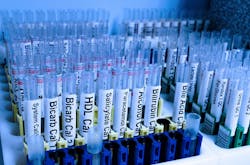The National Academies of Sciences, Engineering, and Medicine released a new report on COVID-19 testing, examining four topics related to the use and interpretation of COVID-19 diagnostic tests: the advantages and limitations of reverse transcription polymerase chain reaction (RT-PCR) testing; the status of point-of-care tests; strategies and considerations for certain types and sequences of tests; and next-generation sequencing (NGS) testing.
The report, known as a rapid expert consultation, does not cover antibody tests.
Even when vaccines become widely available, diagnostic testing will continue to be critical to guide COVID-19 treatment, disease surveillance, contact tracing efforts, and plans to reopen the economy and schools. At present, at least 30 million tests will need to be performed each week in order to quickly diagnose individuals and their contacts, while screening of asymptomatic individuals may require up to 14 million tests per day, the rapid expert consultation said.
Currently, RT-PCR tests — which must be performed in a central laboratory — are considered the gold standard for detecting the presence of infectious viruses. This may change, however, as more evidence emerges on antigen-based diagnostic tests and on other highly sensitive testing methods.
The report noted trade-offs between RT-PCR tests versus the rapid point-of-care (POC) tests that are commonly used to screen asymptomatic individuals. POC tests may have lower sensitivity and specificity. They often need to be run multiple times per week for each person to quickly detect and isolate cases to reduce prevalence in certain environments, such as college campuses. The rapid expert consultation notes that at this time, there are few systems and compliance measures in place for reporting rapid POC test results to public health authorities, especially when the tests are conducted by employers or universities. Therefore, the numbers and locations of individuals who are infected may not be documented, and infection transmission may go unchecked.
The rapid expert consultation also identified situations in which split-pool testing (testing pools of samples, then splitting the pool and testing again) and wastewater surveillance (a method for testing water containing human waste to detect symptomatic and asymptomatic individuals) can provide advantages beyond individual diagnostic testing methods. In addition, it explores the potential of NGS, which could offer a highly sensitive and specific test. Some companies may be able to test 10,000 samples at a time with a turnaround time of 24-48 hours. Still, it remains unknown whether NGS tests will face the same transport, processing, and reporting challenges as RT-PCR tests.
The National Academies’ Standing Committee on Emerging Infectious Diseases and 21st Century Health Threats, assembled in early March at the request of the White House Office of Science and Technology Policy and the Department of Health and Human Services’ Office of the Assistant Secretary for Preparedness and Response in response to the COVID-19 outbreak, has been providing rapid expert consultations on several topics, such as social distancing, severe illness in young adults, and crisis standards of care.

